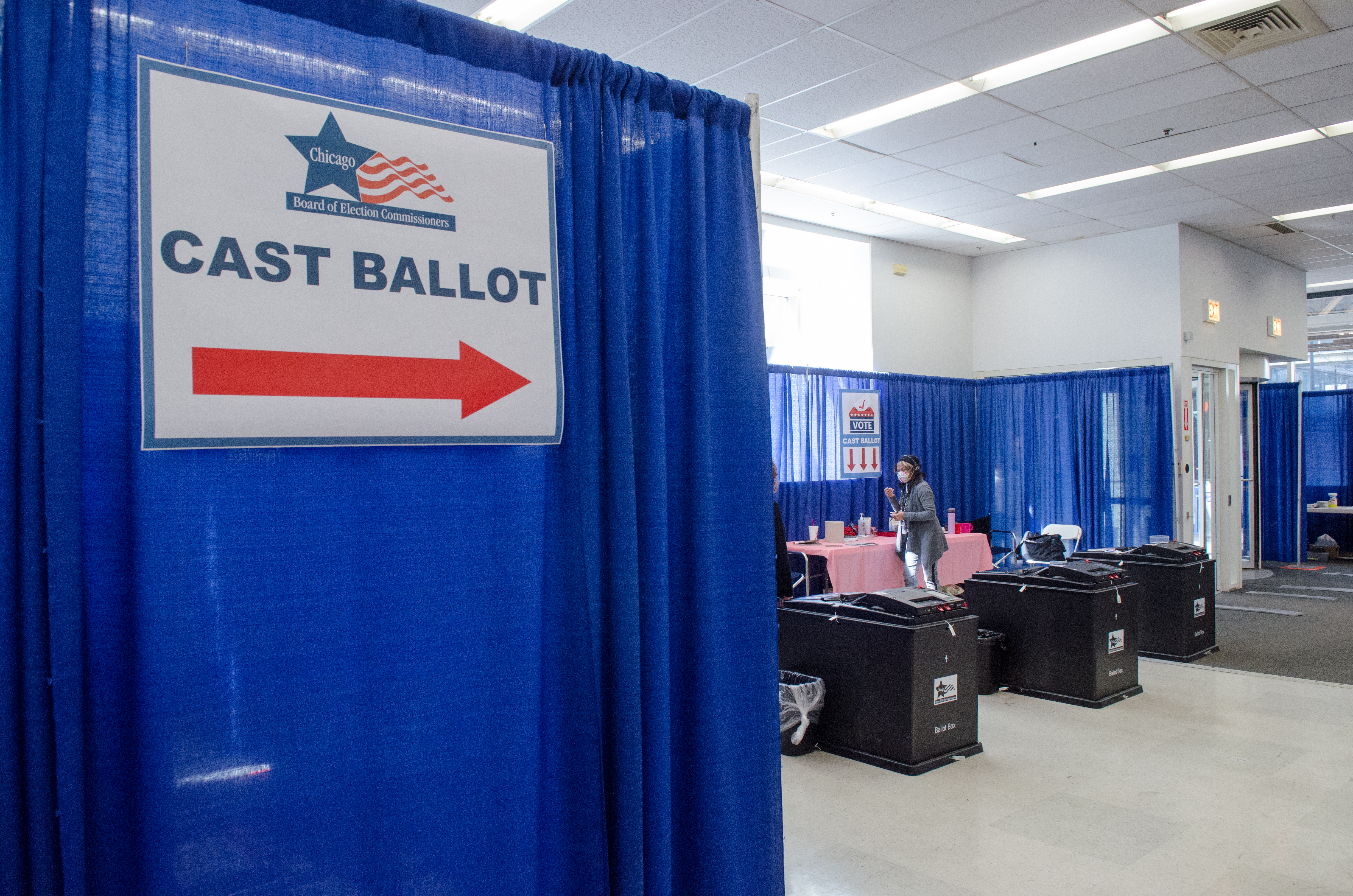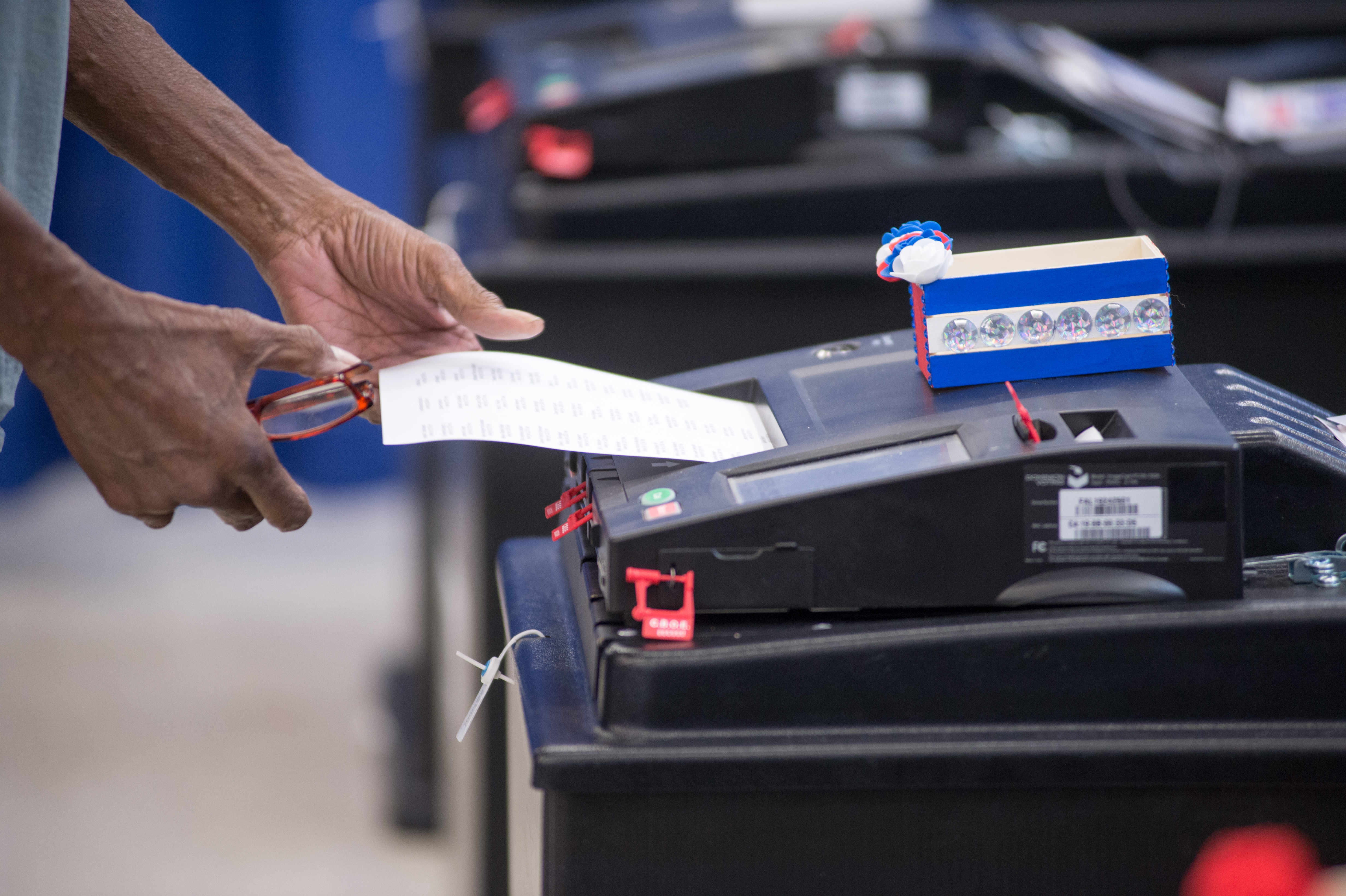The presidential election is less than a week away, but there is more than one step to choosing the country’s next leader thanks to the Electoral College.
While all other races are determined by popular vote, voters for president aren’t actually casting ballots directly for their chosen candidate.
That process involves several steps, culminating with the vote of the Electoral College and the certification of those votes by Congress.
Here’s how that process works.
What is the Electoral College?
As Americans likely know, voters are not casting ballots directly for a candidate for president when they go into the voting booth.
Rather, they are voting for a slate of “electors,” chosen by the presidential candidate’s political party, that will cast Electoral College votes on their behalf at a later date.
Local
Essentially, whatever “slate” receives the majority of support is then declared the winner, and will later cast the state’s Electoral College votes for their chosen candidate, according to the Library of Congress.
How are the number of electors in each state determined?
Feeling out of the loop? We'll catch you up on the Chicago news you need to know. Sign up for the weekly Chicago Catch-Up newsletter.
Under Electoral College rules, a state has as many electors as it does members of Congress. In the case of Illinois, the state has 17 members of the House and two senators, giving it 19 Electoral College votes.
Every state has a minimum of three Electoral College votes. The District of Columbia is also represented in the Electoral College, a change that was made with the passage of the 23rd Amendment in 1961.
In total, there are 538 electors in each race, with 270 votes required to win the presidency.
Do all states use the “winner-take-all” system?
While 48 states and the District of Columbia are “winner-take-all” states, meaning that all of their Electoral College votes go to the winning candidate, two states take a slightly different approach.
Maine and Nebraska use what is called a “District System.” One of their electoral votes is given to the presidential candidate who wins the popular vote in each Congressional district, while the other two votes are awarded to candidates receiving the most votes statewide.
Nebraska split its votes in the 2020 election, with former President Donald Trump receiving four of its possible five electors and President Joe Biden winning the vote of a Congressional district.
Nebraska mulled changing that policy for the 2024 election, but the effort was unsuccessful.
When does the Electoral College vote?
According to federal law, the Electoral College’s members cast ballots in their home states during meetings that occur on the first Tuesday after the second Wednesday of December.
This year, that vote will occur on Dec. 17.
Do electors have to support their state’s chosen candidate?
Since political parties choose their slate of electors, it is expected that they will ultimately cast their electoral ballots for their candidate if they are victorious in the popular vote.
A majority of states do have laws that require electors to pledge their votes for their party’s nominees for president and vice president, but there are exceptions, according to the Library of Congress.
There have been a limited number of electors who have cast their ballots for a different candidate. The most noteworthy example occurred in 2016 when seven so-called “faithless” electors did not cast their ballots for either Trump or former Secretary of State Hillary Clinton.
Electoral College votes were cast for Colin Powell, Ron Paul, John Kasich, Bernie Sanders and Faith Spotted Eagle, with voters in Washington, Texas and Hawaii all defecting, according to 270toWin.
Several other “faithless electors” tried to cast ballots for other candidates, but were prevented from doing so by state law.
When are votes officially tallied?
While the Electoral College officially votes in December, those votes are certified during a joint session of Congress on Jan. 6. The vice president, serving as the President of the Senate, oversees that certification, meaning that Vice President Kamala Harris will either certify her own victory, or that of her opponent former President Donald Trump.
What happens if there’s a tie?
Since there are 538 Electoral College votes, it is possible that there would be a tie. It is also possible for a third-party candidate to receive enough Electoral College votes to prevent a candidate from winning a majority of the votes in an election.
In either of those situations, the decision on who would become the next president would fall to the House of Representatives. That body’s members would not cast individual votes, but would instead cast one vote per state delegation, with the winner needing at least 26 votes to triumph.
The Senate would also be involved in the process, with senators voting on the next vice president, with each senator casting a ballot in that race. A minimum of 51 senators would be required for a VP to be elected.
Has there been any push to eliminate the Electoral College?
The popular vote and the Electoral College have largely agreed during the course of American history, but in recent years, there have been multiple instances of the winning presidential candidate not capturing the most popular votes.
That occurred in 2000 when former Vice President Al Gore won more popular votes than Texas Gov. George W. Bush, but Bush received more Electoral College votes. It happened again in 2016 when Trump defeated Clinton despite being outvoted by nearly three million votes.
Those results have resulted in amplified calls for the Electoral College to be eliminated, with a nationwide popular vote used instead.
Stanford Magazine published a story featuring opposing views on the abolition of the Electoral College. Professor Jack Rakove, advocating for the Electoral College to be eliminated, cites the “one person, one vote” principle enshrined in U.S. law, and also say that its elimination would remove so-called “Battleground States” from their dominant position in the presidential election, requiring candidates to campaign in more areas.
Professor Michael McConnell argues against dismantling the Electoral College, arguing that it “gives a slight edge to candidates with broad-based support over many states” instead of those who rack up majorities in a handful of large states.
He also cites reduced expenditures for campaigns, as they only have to focus on smaller-scale ad buys and operations by competing in battleground states.
Other critics of the Electoral College have pointed to the role of those seeking to protect the institution of slavery in crafting how it worked, with slave states originally shoring up their political representation thanks to the "Three-Fifths Compromise."



